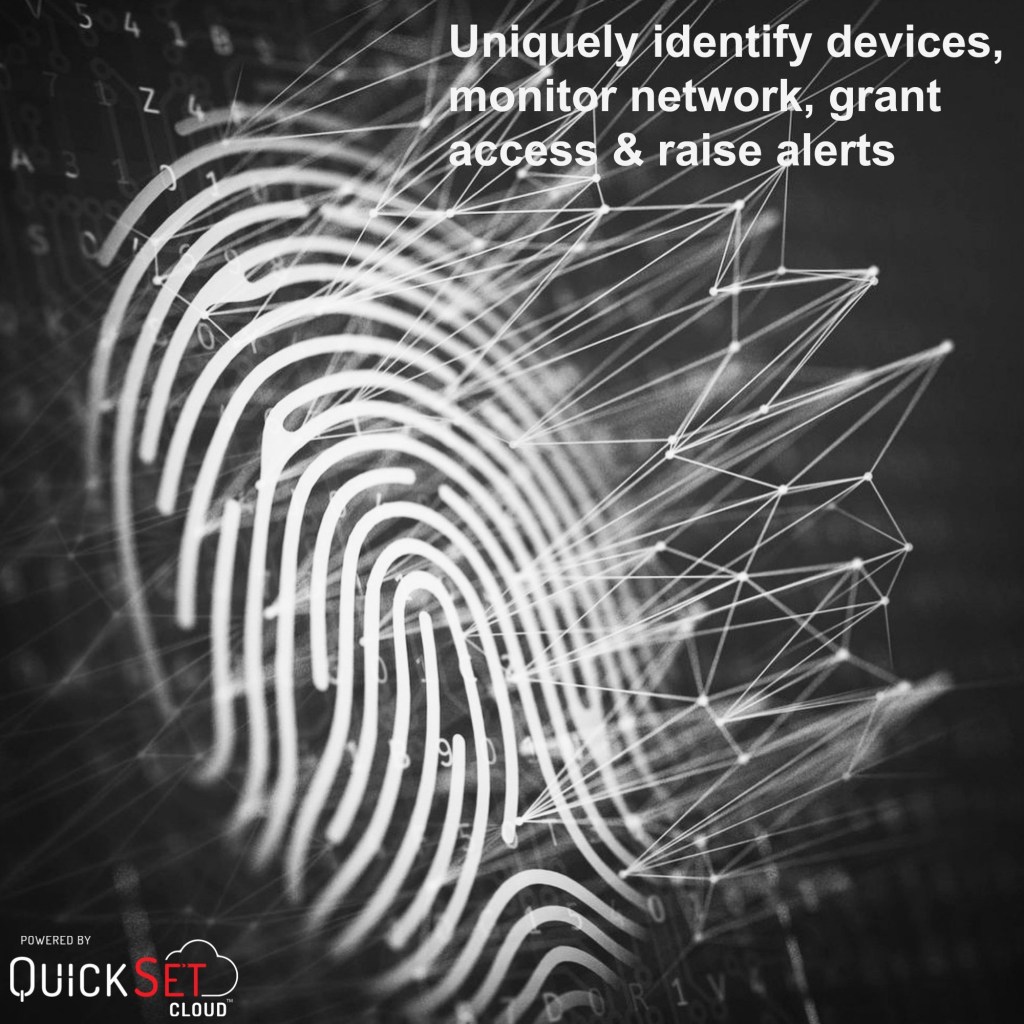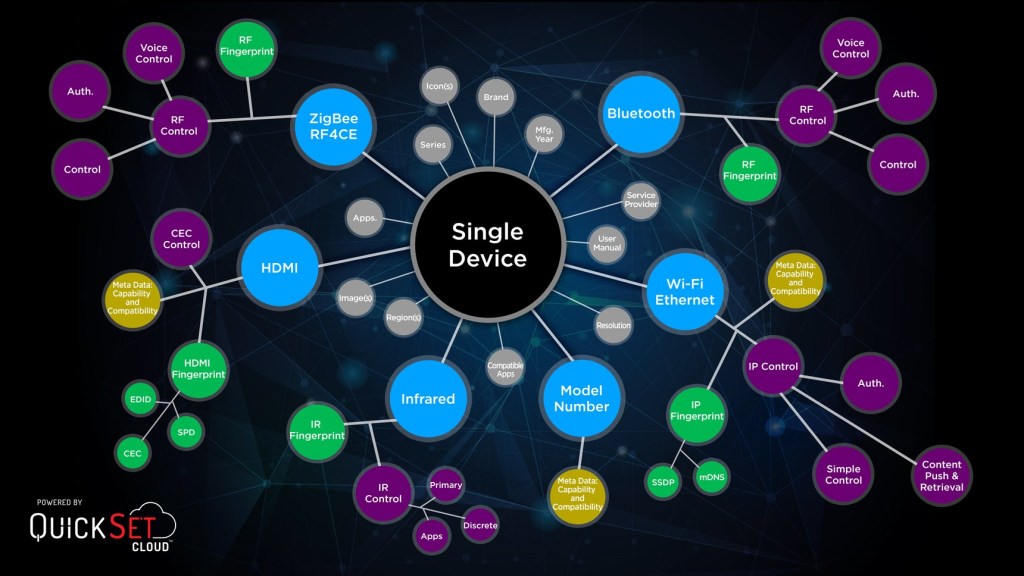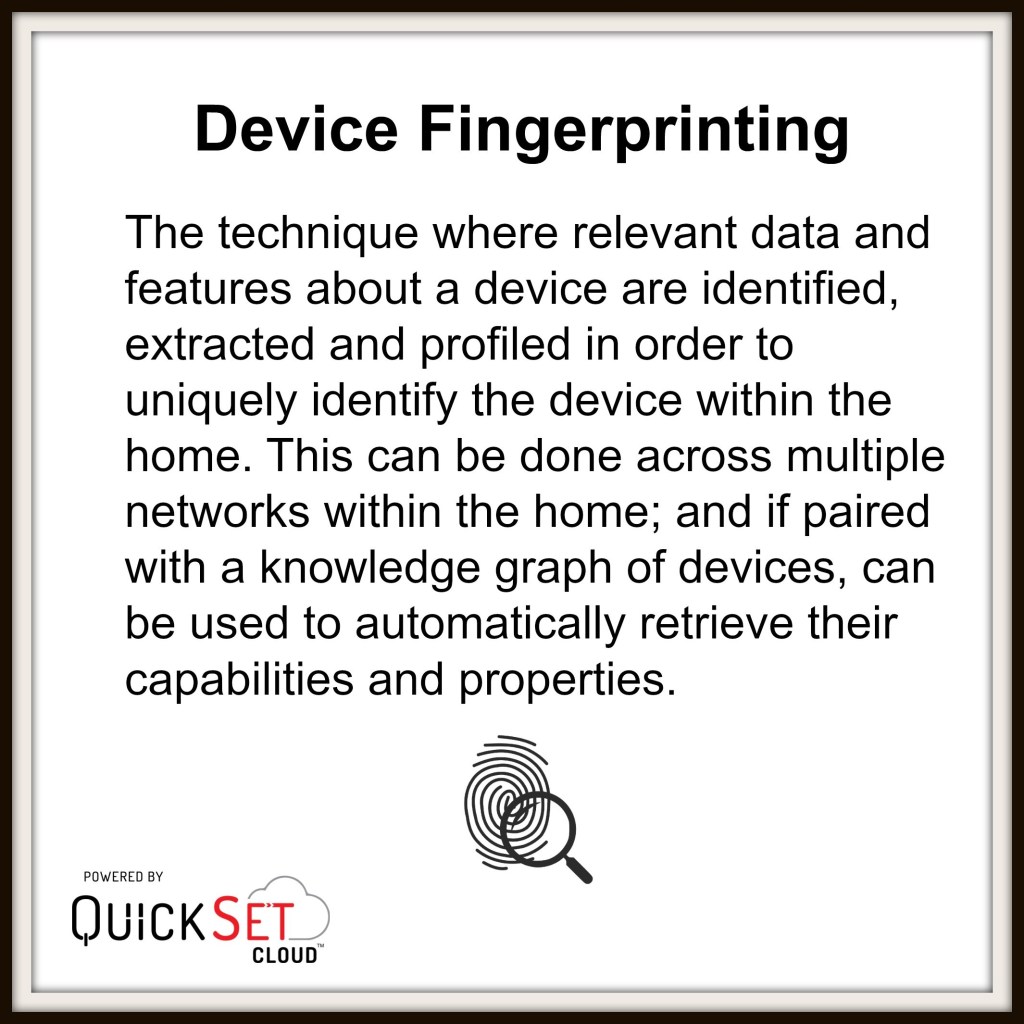Consumers purchasing smart home devices are looking for solutions that simplify their user experience right from the time when they open the box, starting with set-up and installation of their devices. The initial setup and configuration can be automated utilizing device fingerprinting to retrieve the necessary information and provide an easy out of the box experience.
A good user experience addresses both the out of the box device setup as well as a smooth daily interaction with the devices. Features such as user-friendly names that can be easily recognized by consumers on the Smart TV UI as opposed to "HDMI 1", "HDMI 2"; or proper device types and names instead of generic MAC addresses on a wireless router management page, both address real usability issues for the consumer. At the core of both features is the need to dynamically discover and recognize devices across different networks.
Better user experiences across connected devices, from Smart TVs to Wireless Routers, both out of the box and in the daily use, enabled by device fingerprinting techniques.
Security
According to the Client Computing Group at Intel, the world is expected to have 50 Billion connected devices by 2020! With such a growing number of devices, security remains to be one of the top concerns for the consumers. There are different applications available in the market that are using device fingerprinting techniques to provide security by acting as the primary gatekeeper in the home network. A robust security application can only be achieved with proper device fingerprinting, to uniquely identify and track the devices and subsequently grant access to their services. These applications and services provide necessary monitoring and analytics about the devices through their intuitive user interface, generate alerts on unusual activities and even enable remote access in events of troubleshooting.

50 Billion connected devices by 2020, device fingerprinting and AI-based behavior profiling can protect consumers.
Remote Technical Support
According to Parks and Associates, 50% of Smart home consumers face set-up problems and 32% face technical issues resulting in poor device performance. That being said, remote technical support and system diagnosis have gained immense popularity among the smart homeowners today. According to Customer and Product Experience 360, in the U.S., the average consumer spends as much as 2.5 hours between self-help and technical support to fix the problems with their connected devices. For a technical support to be able to properly address the consumer concerns, they need to have a full understanding of the piles of connected devices within the home.
Let's take a look at a simple yet popular tech support case where a customer is unable to set up the device and ends up making a support call. With the technology at hand, technicians can access the home network to identify the correct device and guide the client with necessary steps. A simple and quick fix of their problems.
Comprehensive information about devices such as their brand name, model number, series number, manufacturer, current capabilities and offerings, their physical and software characteristics and will lead to a correct diagnosis of consumers’ problems. Device Fingerprinting can provide proper information and access to the consumers’ devices for an efficient real-time troubleshooting. Remote diagnostics will also help the technicians to understand the real problems in consumer homes and better prepare for their customer visits.
Customer issues are being diagnosed and resolved remotely by access to the home network through device identification and troubleshooting.
Personalization
Smart home technologies are entering the consumers' homes at a faster pace than ever before, and companies are working towards creating user experiences that are exclusive and revolve around their usage pattern. Device fingerprinting provides a complete understanding of devices in an ecosystem by uniquely identifying them and their properties. This wide dataset of information can help paint a true picture of consumers’ likes, interests and their interaction pattern with the devices. This information can further enable interesting use cases for personalized user experiences and monetization from customized advertisements. It is important to note, the proper balance between personalization and privacy should always be kept in mind, and the technology chosen should take privacy into consideration from the beginning.
Devices within the home along with the consumers' behavior and preferences are bringing about customized user experiences.
Device fingerprinting with QuickSet
QuickSet Discovery and Predictive engines detect device signatures across multiple home networks including HDMI, IP, and Zigbee rf4ce; calculate fingerprints and traverse the largest knowledge graph of devices to uniquely identify a device. With its predictive modeling, QuickSet intelligently identifies devices and their additional attributes. The results obtained across the different networks are merged to provide a single device object definition towards the host application. QuickSet, using its device fingerprinting technique and leveraging the constantly growing knowledge graph of devices, enables support for brand new devices as well as existing devices with changing behavior within the home. When it comes to the control information, QuickSet again goes beyond a single protocol approach for interacting with multiple devices.
QuickSet’s technology today enables many different use cases, primarily driven by the user experiences in the home.

By implementing the whole-home discovery and control capabilities embodied in QuickSet, companies and application developers make it possible for consumers to automatically discover and interact with all points of access to content and applications in the home through a single point of control.





